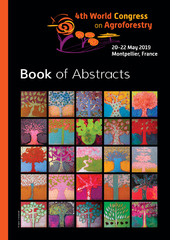Приказ основних података о документу
Forest windbreaks serving a function of the agricultural land shield from the negative effects of wind
| dc.creator | Josimović, Boško | |
| dc.creator | Milijić, Saša | |
| dc.creator | Bezbradica, Ljubiša | |
| dc.date.accessioned | 2023-03-01T11:57:00Z | |
| dc.date.available | 2023-03-01T11:57:00Z | |
| dc.date.issued | 2019 | |
| dc.identifier.uri | http://raumplan.iaus.ac.rs/handle/123456789/759 | |
| dc.description.abstract | Out of 88,361 km² of the Republic of Serbia’s territory, 53.76% is agricultural land, amounting to 47,502.173 km². Considerable part of that land is situated in the Autonomous Province of Vojvodina (APV) (19.69 %, or 17,397.92 km²). Its terrain mostly consists of lowlands belonging to the Pannonian Basin, intersected by numerous rivers and canals. About 7% (exactly 7.1%) of land in APV is covered by forest (compared to 29.1% in the Republic of Serbia), while that percentage in the eastern parts of the province, where the effect of the southeastern wind called Košava is the greatest, goes between 1.5 and 7.7%. Lowland terrain and the climate there make this area susceptible to wind erosion, i.e. degradation of the agricultural land. The negative effect is two-fold: deflation of fertile soil particles, and deposition of infertile material over fertile agricultural land. Degradation of the agricultural land due to the wind erosion, salinization of the soil caused by irrigation and flooding, spreading of infrastructure and similar negatively affect the area of land convenient for agriculture. The paper points to all the adverse effects that lead to the decrease of arable land areas in APV, making it vital to protect and preserve the most fertile zones. As a priority measure, raising forest windbreaks is suggested so as to provide a long-term protection of the degraded agricultural land and preserve the existing agricultural land, along with the crops raised there. The purpose of this paper is to analyze the need for, the types of and the techniques of forest windbreaks on the territory of the Autonomous Province of Vojvodina, in the Republic of Serbia, as well as to establish other positive impacts of planting and maintaining forests. It also presents a comparative analysis of the change in the ration between agricultural and forested areas based on CORINE Land Cover – CLC database, illustrating natural and both positive | sr |
| dc.language.iso | en | sr |
| dc.publisher | Montpellier : CIRAD, INRA, World Agroforestry | sr |
| dc.relation | info:eu-repo/grantAgreement/MESTD/Technological Development (TD or TR)/36036/RS// | sr |
| dc.rights | openAccess | sr |
| dc.rights.uri | https://creativecommons.org/licenses/by/4.0/ | |
| dc.source | Book of Abstracts, 4th World Congress on Agroforestry | sr |
| dc.subject | agricultural land | sr |
| dc.subject | forest windbreaks | sr |
| dc.subject | land degradation | sr |
| dc.subject | wind erosion | sr |
| dc.subject | protection | sr |
| dc.title | Forest windbreaks serving a function of the agricultural land shield from the negative effects of wind | sr |
| dc.type | conferenceObject | sr |
| dc.rights.license | BY | sr |
| dc.citation.spage | 359 | |
| dc.citation.epage | 359 | |
| dc.citation.rank | M34 | |
| dc.description.other | Edited by Christian Dupraz, Marie Gosme and Gerry Lawson | sr |
| dc.identifier.fulltext | http://raumplan.iaus.ac.rs/bitstream/id/3141/bitstream_3111.pdf | |
| dc.identifier.rcub | https://hdl.handle.net/21.15107/rcub_raumplan_759 | |
| dc.type.version | publishedVersion | sr |

